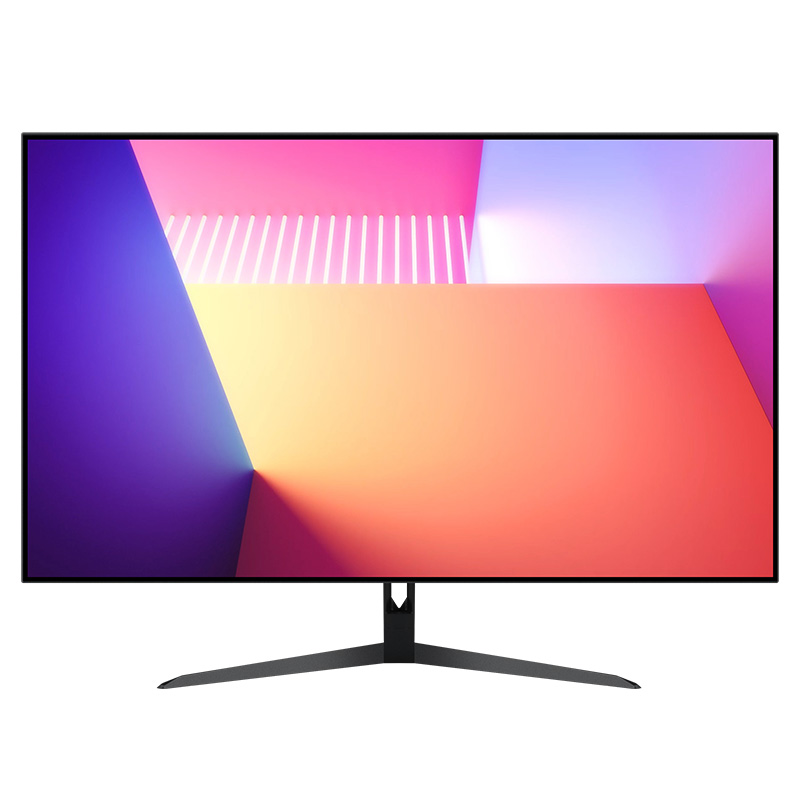How to choose a monitor
2023-05-19
Choosing a monitor involves considering several factors to ensure you find the right one for your specific needs. Here are some key points to consider when selecting a monitor:
Monitor Size: Determine the ideal screen size based on your requirements and available space. Consider the purpose of the monitor—whether it's for gaming, professional work, or general use—to determine the optimal size for your needs.
Resolution: Higher resolutions provide sharper and more detailed images. The most common resolutions are Full HD (1920x1080), Quad HD (2560x1440), and 4K Ultra HD (3840x2160). Choose a resolution based on your usage requirements, the size of the monitor, and your budget.
Panel Technology: There are three primary panel technologies: Twisted Nematic (TN), In-Plane Switching (IPS), and Vertical Alignment (VA). Each has its strengths and weaknesses. TN panels offer faster response times and lower cost but may have limited viewing angles and color accuracy. IPS panels have excellent color reproduction and wider viewing angles but may have slightly slower response times and be more expensive. VA panels generally provide good contrast ratios and color reproduction but may suffer from slower response times.
Refresh Rate: The refresh rate determines how many times the monitor updates the image per second and is measured in Hertz (Hz). A higher refresh rate, such as 144Hz or 240Hz, can provide smoother motion, making it ideal for gaming or fast-paced content. For general use, a 60Hz refresh rate is typically sufficient.
Response Time: Response time refers to the time it takes for a pixel to transition from one color to another. Lower response times are desirable, especially for gaming or fast-paced activities, as they reduce motion blur and ghosting. Aim for a response time of 5ms or lower for optimal performance.
Connectivity: Ensure the monitor has the necessary ports to connect to your computer or other devices. Common options include HDMI, DisplayPort, DVI, and VGA. Consider the types of devices you'll be connecting to the monitor and choose accordingly.
Additional Features: Some monitors offer extra features such as built-in speakers, USB hubs, adjustable stands, and compatibility with technologies like HDR (High Dynamic Range). Assess which features are important to you and align with your budget.
Budget: Determine your budget range for the monitor. Prices can vary significantly based on size, resolution, panel technology, and additional features. Consider your needs and strike a balance between performance and affordability.
Read Reviews and Compare: Once you have a few options in mind, read reviews from reputable sources or check user feedback to gain insights into the monitor's performance, quality, and reliability. Comparing different models will help you make an informed decision.
Monitor Size: Determine the ideal screen size based on your requirements and available space. Consider the purpose of the monitor—whether it's for gaming, professional work, or general use—to determine the optimal size for your needs.
Resolution: Higher resolutions provide sharper and more detailed images. The most common resolutions are Full HD (1920x1080), Quad HD (2560x1440), and 4K Ultra HD (3840x2160). Choose a resolution based on your usage requirements, the size of the monitor, and your budget.
Panel Technology: There are three primary panel technologies: Twisted Nematic (TN), In-Plane Switching (IPS), and Vertical Alignment (VA). Each has its strengths and weaknesses. TN panels offer faster response times and lower cost but may have limited viewing angles and color accuracy. IPS panels have excellent color reproduction and wider viewing angles but may have slightly slower response times and be more expensive. VA panels generally provide good contrast ratios and color reproduction but may suffer from slower response times.
Refresh Rate: The refresh rate determines how many times the monitor updates the image per second and is measured in Hertz (Hz). A higher refresh rate, such as 144Hz or 240Hz, can provide smoother motion, making it ideal for gaming or fast-paced content. For general use, a 60Hz refresh rate is typically sufficient.
Response Time: Response time refers to the time it takes for a pixel to transition from one color to another. Lower response times are desirable, especially for gaming or fast-paced activities, as they reduce motion blur and ghosting. Aim for a response time of 5ms or lower for optimal performance.
Connectivity: Ensure the monitor has the necessary ports to connect to your computer or other devices. Common options include HDMI, DisplayPort, DVI, and VGA. Consider the types of devices you'll be connecting to the monitor and choose accordingly.
Additional Features: Some monitors offer extra features such as built-in speakers, USB hubs, adjustable stands, and compatibility with technologies like HDR (High Dynamic Range). Assess which features are important to you and align with your budget.
Budget: Determine your budget range for the monitor. Prices can vary significantly based on size, resolution, panel technology, and additional features. Consider your needs and strike a balance between performance and affordability.
Read Reviews and Compare: Once you have a few options in mind, read reviews from reputable sources or check user feedback to gain insights into the monitor's performance, quality, and reliability. Comparing different models will help you make an informed decision.
By considering these factors and assessing your specific requirements, you can select a monitor that suits your needs, whether it's for gaming, work, content creation, or general use.




